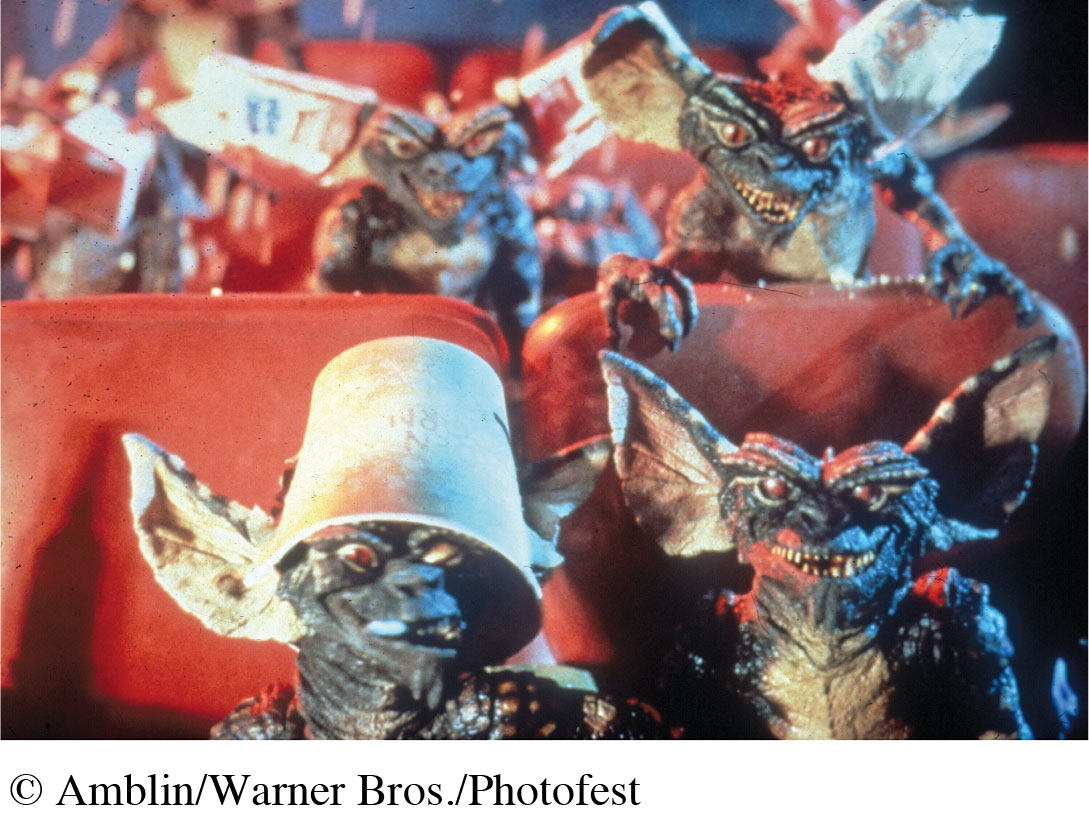The Transformation of the Hollywood Studio System
Starting in the late 1940s, a number of forces began reshaping how people viewed movies and what they expected to see when they watched a film. These forces stemmed from new regulations seeking to break up studios’ hold over the film industry, social developments (e.g., massive migrations of city dwellers to the suburbs), and competing mass media (namely, the increasing popularity of TV). Together, these changes forced the Hollywood studio system to adapt in an effort to remain viable and profitable, even after national weekly movie attendance peaked in 1946.
The Paramount Decision
An important force reshaping the Hollywood system took form in the wake of the Paramount decision. This 1948 court ruling (fueled by the government’s discomfort with the movie industry’s power) forced the big, vertically integrated studios to break up their ownership of movie production, distribution, and exhibition. As a result, the studios eventually gave up their theater businesses.
The ruling never really changed the oligopoly structure of the Hollywood film industry, because it failed to weaken the industry’s control over movie distribution. However, it did open up opportunities in the exhibition pillar of the industry for new players outside Hollywood. For instance, art houses began showing more documentaries or foreign films, and thousands of new drive-in theaters sprang up in farmers’ fields—all of which offered alternative fare to moviegoers.
Flight to the Suburbs
After World War II, waves of Americans experienced a severe case of pent-up consumer demand after years of wartime frugality. Thus, they migrated from cities to the suburbs to purchase their own homes and spend their much-increased discretionary income on all manner of newly available luxuries. These changes badly hurt the Hollywood studio system: Suburban neighborhoods were located far from downtown movie theaters, and people’s leisure-time preferences had shifted from watching movies to shopping for material goods, such as cars, barbecue grills, and furniture.
To make matters worse for studios, the average age of couples entering marriage dropped from twenty-four to nineteen after the war. Thus, there were significantly fewer young couples going to the movies on dates.
Television
As Hollywood responded to the political, regulatory, and social changes transforming 1940s and 1950s America, it also sought to strike back at the major technological force emerging at that time: television. Studios used several strategies in their efforts to compete with TV.

First, with growing legions of people gathering around their living-room TV sets, studios shifted movie content toward more serious themes—including alcoholism (The Lost Weekend, 1945), racism (Pinky, 1949), sexuality (Peyton Place, 1957; Butterfield 8, 1960; and Lolita, 1962), and other topics from which television stayed away. Ironically, such films challenged the authority of the industry’s own Motion Picture Production Code, adopted in the early 1930s to restrict film depictions of violence, crime, drug use, and sexual behavior. (For more on the Code, see Chapter 13.) In 1967, the Motion Picture Association of America initiated the current ratings system, which rates films for age appropriateness rather than censoring all adult content.
Second, the film industry introduced a host of technological improvements designed to lure Americans away from their TV sets. These innovations included Technicolor, a series of color film processes (alluring in a world where TV screens showed only black-and-white images). Movie theaters also began offering wide screens, stereophonic sound, and extra-clear film, which was a huge improvement over previously fuzzy images. But although these developments may have drawn some people back to downtown movie theaters, they weren’t enough to surmount the studios’ core problem: the middle-class flight to the suburbs, away from downtown movie theaters.
Home Entertainment
Things got even more challenging for the studio system in the 1970s, when the introduction of cable television and the videocassette gave rise to the home-entertainment movement. Despite some worries that this trend would be a blow to the studios, Hollywood managed to adapt, developing a new market for renting and selling movies—first on VHS, then on DVD, and more recently on the Blu-ray format.
Studios and indies alike are looking toward Internet distribution for the future of the video business. Currently, movie fans can download or stream movies and television shows for rent or for purchase from services like Netflix, Amazon, Hulu, Google, and the iTunes store to their television sets through devices like Roku, Apple TV, TiVo Premiere, video game consoles, and Internet-ready TVs. As people invest in wide-screen TVs (including 3-D televisions) and sophisticated sound systems, home entertainment is getting bigger and keeping pace with the movie theater experience. Interestingly, home entertainment is also getting smaller—movies are increasingly available to stream and download on portable devices like tablets, laptop computers, and smartphones.